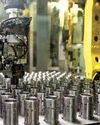
One would argue that the lack of domestic capital in Indian startups has a large adverse impact. Why was it that Indian VCs, PEs and the like did not catch up as startups in India picked up despite the availability of wealth?
The domestic venture capital (VC) space in India is relatively new. Private equity funds (PE) came in first and domestic PEs started taking off in the early 2000s, which was when the internet bubble burst. That kept domestic money out of the digital space. In the last decade, India became a hot investment destination for foreign players and sectors such as telecom, mobile and data boomed. India's IT talent also came into the limelight. This attracted VC funding to Indian shores. That was how the story began but the regulatory framework around alternate investment funds (AIF) and related issues was not clear. Hence, the domestic industry did not take over.
It was only when large amounts of overseas monies began coming into startups and tech and digital assets that the regulators woke up and the AIF regulations came into play. This was done also to increase the domestic pool of funds. Most of the high net-worth individuals (HNIS) and family offices at the time could only invest their surplus in gold, real estate or stock. When regulations and bodies such as the Indian Private Equity & Venture Capital Association lobbied, some HNIs diversified investments into IAFs. But it was not nearly enough.
This story is from the {{IssueName}} edition of {{MagazineName}}.
Start your 7-day Magzter GOLD free trial to access thousands of curated premium stories, and 9,000+ magazines and newspapers.
Already a subscriber ? Sign In
This story is from the {{IssueName}} edition of {{MagazineName}}.
Start your 7-day Magzter GOLD free trial to access thousands of curated premium stories, and 9,000+ magazines and newspapers.
Already a subscriber? Sign In

MEMORIES & IMPRESSIONS
Ratan Tata was an exceptional human being. He was a visionary leader, esteemed industrialist, and a humanitarian, who left an indelible mark on India and the world.

The Robotaxi Market
The robotaxi market is shaping up to be a high-stakes battleground as tech giants and automakers race to transform urban mobility.

And the Nobel Prize Goes to AI
The recent Nobel Prize T awards to AI pioneers affiliated with Google have sparked a broader conversation about Big Tech's influence on research and the limitations of traditional prize categories.

Ola Electrified
Once considered a trailblazer in India’s electric vehicle (EV) ecosystem, Bhavish Aggarwal’s Ola Electric now faces a major accountability crisis.

Sharp Slide in Industrial Output on Eve of Deepavali
India’s index of industrial production (IIP) saw a sharp reversal in August, contracting by 0.1 per cent, in stark contrast to the 4.7 per cent growth in July, mostly because of significant contractions in mining and electricity generation.

Heralding the Solar Era with Sustainable Electrification
RAJEEV KASHYAP on the economics of solar power, the hurdles in scaling it, and much more

A WELL-GREASED MACHINE
The OmniBook X14 laptop runs on first-generation Snapdragon X Elite, which bets big on Al-enabled productivity and battery life, but falls short when it comes to overall experience, says Deep Majumdar

DO NOT LETA HEALTH CRISIS RUIN YOUR FINANCIAL HEALTH
For a family of four living in a metro, it is recommended to opt for a family floater health insurance plan with a sum insured of at least Rs 15-20 lakh

Disruption Ahead: Beyond Organisation Charts and Structures
ALBERT EINSTEIN FAMOUSLY said, “We cannot solve our problems with the same thinking we used when we created them.

Dr. Rahul Shivajirao Kadam: A Visionary Leader Blending Sustainability, Innovation, And Social Empowerment
We are on the stage of global warming, and these technologies not only help prevent further damage but also leave behind a better environment for future generations.